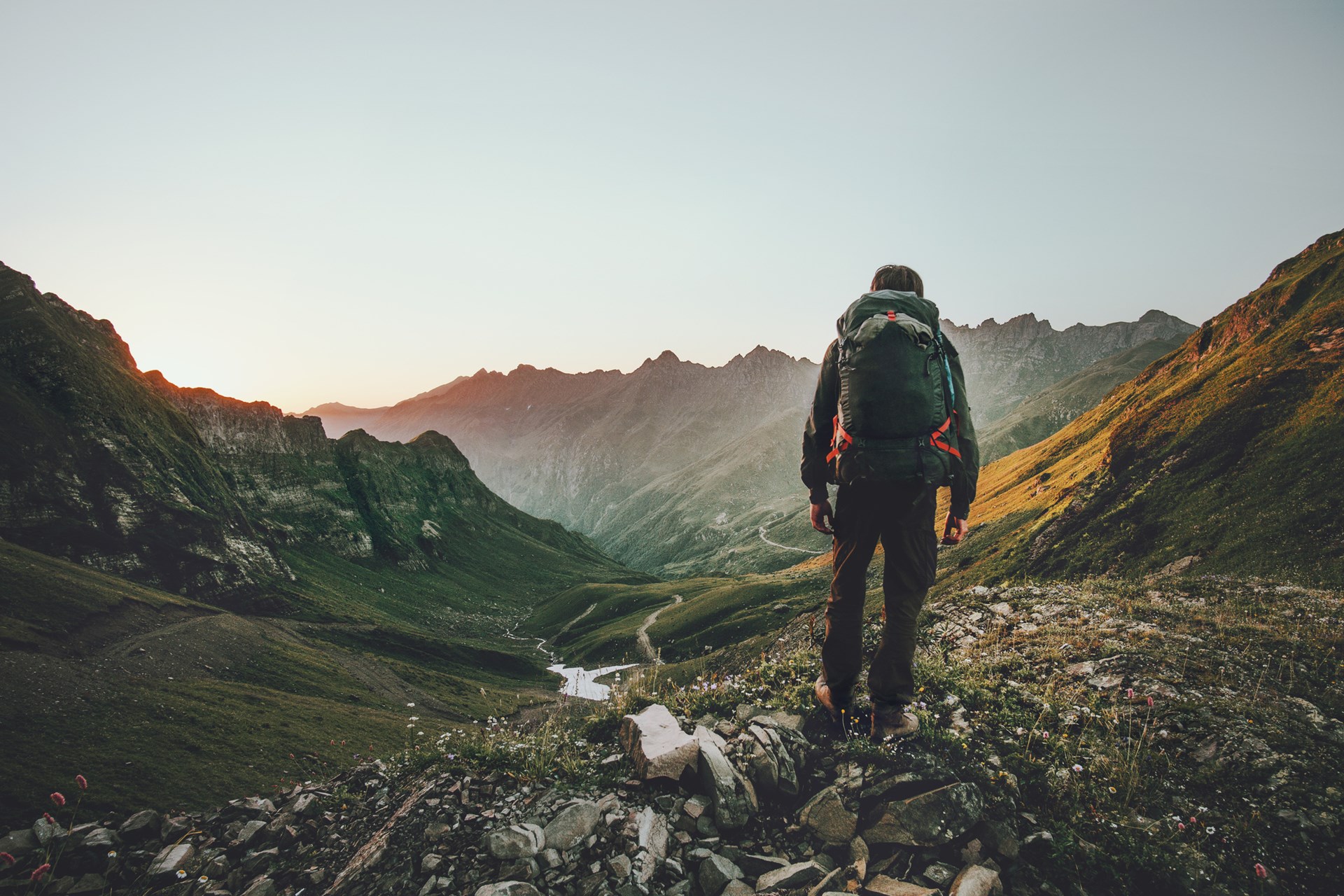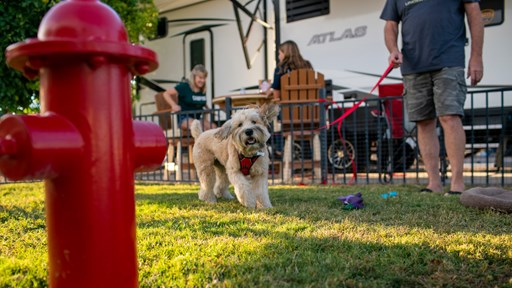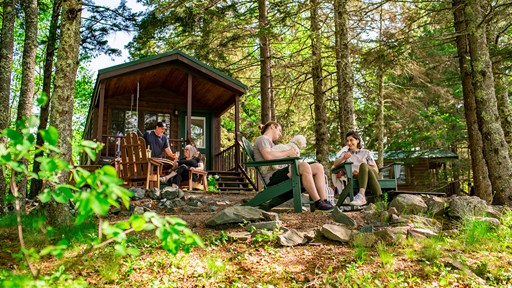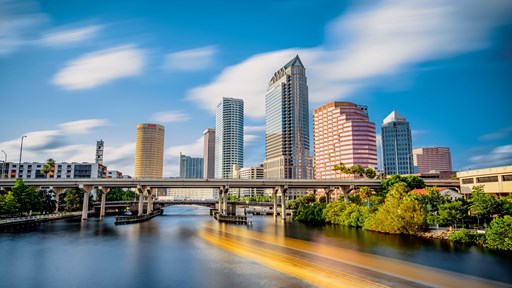How to Hike Without Leaving a Trace
Most of us think about hiking as a way to have a good time, exercise, be social, and enjoy the outdoors. However, responsible hikers are also concerned with protecting the outdoors. That’s where Leave No Trace comes in, offering solutions for a sustainable hiking experience.
The Leave No Trace Center for Outdoor Ethics created the following seven principles to help guide you in protecting the environment while you’re out enjoying the outdoors:
- Plan ahead and prepare
- Travel and camp on durable surfaces
- Dispose of waste properly
- Leave what you find
- Minimize campfire impacts
- Respect wildlife
- Be considerate of other visitors
With a bit of dedication, you can put these principles into practice the next time you go out for a hike and inspire others to do the same. It will be good for the well-being of both you and the environment and help ensure that the environment can be enjoyed fully by others for future generations.
To align your outdoor habits with the no trace hiking principles mentioned above, consider the following tips.
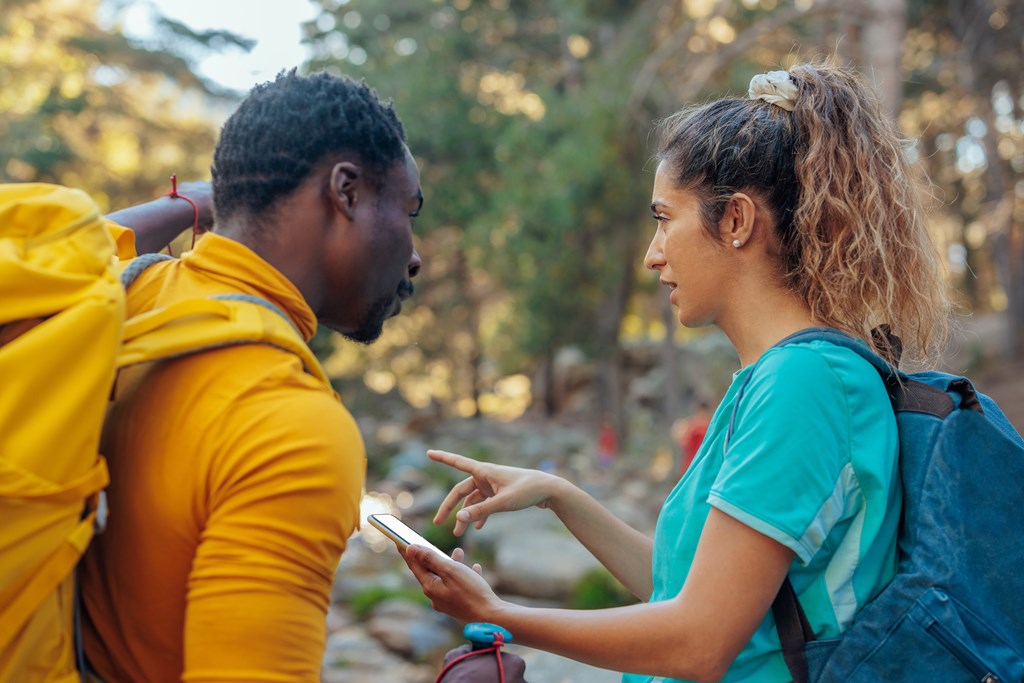
Be Prepared
You can enjoy some of the most remarkable sights and experiences just by walking. However, these gorgeous locations are often quite fragile. To keep some of the world’s natural wonders safe, it is essential to thoroughly plan your hikes and camping trips beforehand.
Planning involves looking at the weather and packing sustainable hiking clothes, carrying plenty of water and food, knowing your route, telling a friend or family member where you’re going, gathering any necessary permits, and carrying a first aid kit.
To keep it simple:
- Create a camping checklist to ensure you have everything you need to adhere to the Leave No Trace principles.
- Make sure you have a sleeping bag, light sources, a tent, clothing, food, maps, etc.
- Check things off as you get them, and you will put yourself in a good place.
Preparing and planning for your trip can help you enjoy it more while keeping yourself and the environment safe. Try your best to predict every possible twist and turn that could happen while you are out on the trail, giving yourself the best chance at being equipped with everything you will ever need.
Utilize Sustainable Gear
With a better idea about what you need beforehand, you can head to the store and find the gear and supplies you require. You will also be able to make environmentally conscious decisions to choose sustainable hiking gear, ensuring you make full-scale changes to wholly protect your surroundings.
Most garments, from hats to backpacks and even the hiking boots you wear, have environmental and social impacts. Many are manufactured from synthetic materials, posing ecological problems at every stage of their life. Some synthetic materials on boots and other gear rub off and break loose when you use them, contaminating water and polluting the surrounding environment.
During your planning, look for sustainable hiking brands like Patagonia, Merrell, PrAna, Marmot, or United by Blue. These companies offer a range of gear, from sustainable hiking backpacks to hiking boots and more. Keep an eye out for the Fair Trade Certified™ mark and try to purchase sustainable hiking clothing made from recycled materials or organically grown cotton. When your gear is toward the end of its life, do your best to repair or trade in older gear to create a beneficial cycle.
Some sustainable products you should check out include:
Icebug Men’s Haze RB9X GTX Trail Hiking Shoe
This lightweight, sustainable hiking shoe is suitable for all kinds of weather conditions, keeping your feet dry and trekking with confidence. Effortlessly tighten or loosen these shoes on the go using an innovative system for the perfect fit and maximum comfort.
The upper on this model is manufactured from recycled PET polyester. Its outer sole is 15% recycled rubber, and its midsole is 20% BLOOM material — a state-of-the-art algae material. This shoe is 100% bluesign® certified, which meets the strict sustainability standards of GRS certification and Oeko-Tex criteria.
If you need a light that can keep up with your adventures, the MPOWERED Luci Outdoor 2.0 Solar Inflatable Light is the one for you. This product is an affordable, clean energy resource you can utilize in any situation. It has been created with sustainability in mind, never requiring the use of batteries. Plus, it is durable and ready to handle whatever you throw its way.
GSI Outdoors Destination Cooking Set
Whether you are planning a camping trip or an extended backpacking excursion, you will need to eat. The easiest thing may be to fill your pack with premade foods wrapped in plastic, using disposable utensils and plates for convenience. With the GSI Outdoors Destination Cooking Set, though, you will have cutlery, cooking utensils, containers and cleaning supplies you will need for a tasty meal no matter where you are.
PrAna Sustainable Hiking Clothing
Clothing is one of the most vital pieces of gear you will bring with you on your trip. PrAna is a brand that has dedicated itself to creating sustainable clothing for all kinds of applications, including hiking. They manufacture many of their products using organic cotton and hemp, as well as recycled polyester, cotton and nylon. They have also converted all down to 100% Responsible Down Standard Certified.
Aside from clothing, however, PrAna attempts to be an end-to-end, sustainable brand. They have recently implemented a plastic-free packaging initiative, using a unique roll-pack method or paper bags to get their products to you. Being a bluesign® systems partner, a Fair Labor Association Accredited brand and Fair Trade Certified™ clothing, you can rest easy knowing that you are doing your part when you buy sustainable hiking clothing from PrAna.
Cotopaxi Allpa 42L Travel Pack
This unique and sustainable hiking backpack is an excellent option to bring everything you need on your camping trip. The exterior is designed with a TPU-coated polyester shell to repel all kinds of weather. Its mesh suspension system and load lifter straps help it remain comfortable and easy to carry.
Cotopaxi is another brand that has dedicated its time and resources toward creating sustainable hiking gear. To produce as little waste as possible, 94% of their products contain repurposed and recycled materials, and everything is responsibly sourced. Cotopaxi partners with factories that produce high-quality results and are Fair Trade Certified™ while practicing humane working strategies.
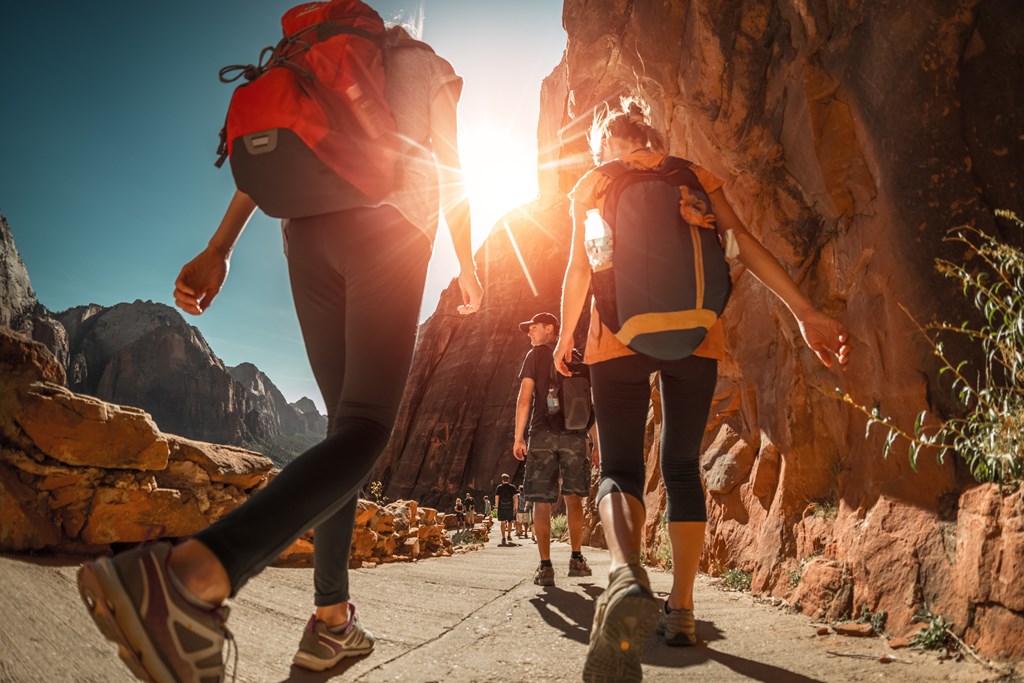
Remember, You’re Only a Visitor
Parks of all types and sizes are meant to be visited and enjoyed. They are beautiful places to take in stunning views and see unique wildlife, but it is crucial to remember that they are also home to various animals and plants.
While on the trail, ensure you are respectful of the flora and fauna you may come in contact with. You should not feed them, tamper with their shelters or interfere in any other way. Keep your distance from nearby wildlife, and if you have pets with you, keep them on a leash and in control.
Keep in mind, you are only a guest in whatever woods you visit. While you may want to bring home a souvenir, it is best to avoid moving rocks, picking plants or flowers, or disturbing cultural or historical artifacts that may be present. It is crucial to leave the area the way you found it, ensuring people can enjoy its beauty for many years.
Being aware of your surroundings and trail and weather conditions helps you camp responsibly and will be important areas to consider during your preparation. Both are important concepts when your goal is to Leave No Trace.
Stay on the Path
Part of being prepared is knowing your route like the back of your hand and sticking to it on the day of your hike. You may want to feel the thrill of creating your path, but you could end up hurting the environment you are trying so hard to enjoy.
Trampling through unmarked land could damage plants and compact the soil, making it more difficult for new life to grow. Eventually, the soil will erode, creating a less healthy environment for life to flourish. This damage can also have a much more significant impact on the surrounding ecosystem as it can destroy potential food sources for insects and animals.
During your hike, do your best to stay on the premade paths of sand, gravel, rock, snow or dry grass. Avoid walking on the sides of the trail.
Plus, unless you have your machete handy, you will have a much more challenging hike if you do not stay on the marked path, which could also lead to injury. During the planning stages of your trip, prepare your route and try not to deviate from it.
Respect Other Hikers
Nature isn’t the only thing you’ll see on the dirt trails. You may meet a handful of fellow hikers trying to enjoy their surroundings, just like you. So, it’s crucial to show respect for these individuals as well. You don’t want to be the person who’s blasting loud music on a remote trail and ruining the peace and quiet for other hikers.
Following trail etiquette and doing your best to share the trail with all other users is a great place to start. Obey any posted rules, follow traditional rights of way, and orient rest spots or campsites away from the trail. Unless you are hiking in popular hunting areas, keep your clothing neutral, with plenty of browns, greens, tans or blacks to minimize any visual disruptions.
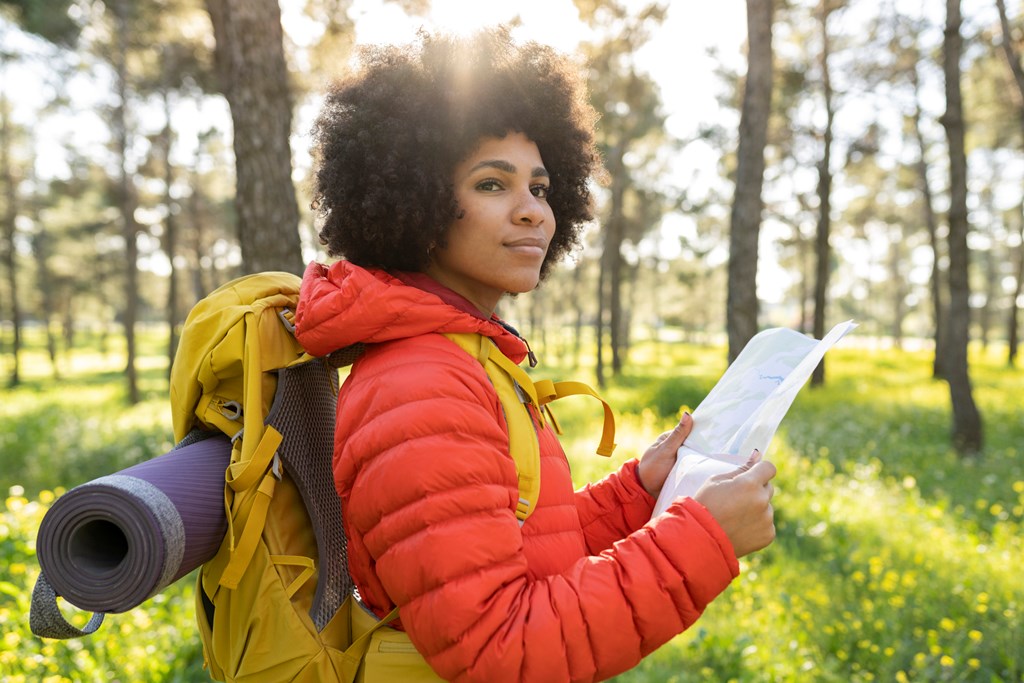
Take Out What You Take In
You may have heard the phrase, “pack it in, pack it out.” While this may seem like a pretty obvious way to reduce your impact on nature, many people don’t follow this saying and leave all sorts of things lying around on the trail. It’s crucial to pack out all of your trash, food scraps, and other belongings after a long hike, ensuring you’re leaving the environment the way you found it.
If you need to do your business while out on the trail, make sure you dispose of it properly. Try to find a spot at least 200 feet away from any water sources and dig a cathole roughly six to eight inches deep. Some areas may not allow it, so make sure to read up on local guidelines.
You have likely been on a hike, walk, or camping trip when you saw trash and debris along the trail or in the campsites. Nothing takes you out of being in nature like seeing an empty chip bag or a crumpled beer can among the leaves and trees. In these situations, you should practice “negative trace,” or picking up what others leave behind. Sure, it might not be your responsibility, but consider it your moral duty to protect nature even when others might not.
Some fragile areas may legally require you to carry everything out, including toilet paper and human waste. While only some locations you visit will be that strict, it is best to get into the habit of carrying trash bags to store your garbage easily. It doesn’t have to be a hassle if you plan accordingly and bring the necessary equipment.
Packing out everything you bring in is an essential and very easy way to reduce your impact on nature.
Enjoy Your Campfire Safely
The glow of a campfire offers a certain kind of magic after a long trek through the wilderness. However, this magic is only possible when you understand how to enjoy it safely.
Some environments will not allow you to have an open campfire, while others encourage alternative options like gas, multi-fuel or even a portable camping stove. If you are allowed to create a traditional campfire, make sure to keep it compact using the smallest diameter wood you can find.
If you are starting a fire, keep the following ideas in mind:
- Avoid areas with vegetation, peaty or dry soil
- Use a fire ring or old fire spot
- Burn the wood down to fine ashes
- Smother the fire completely
- Never burn tins, plastic or food waste
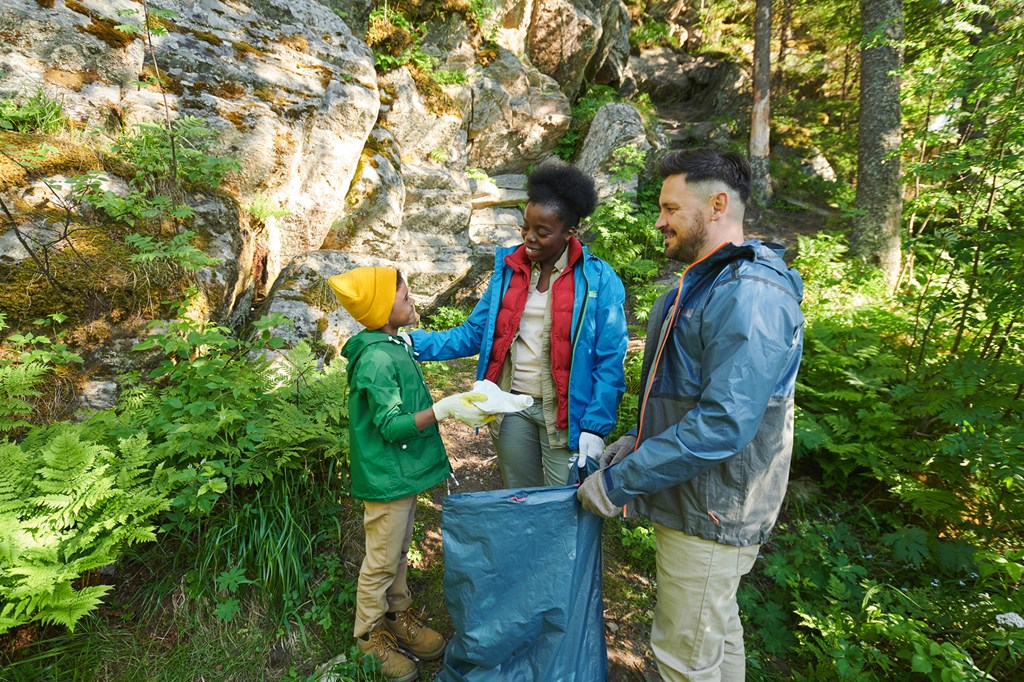
Let’s Work Together to Protect the Environment
Kampgrounds of America is passionate about preserving the great outdoors. Through our “Kamp Green” initiative, we encourage all of our KOA Campgrounds and guests to adopt environmentally friendly practices focused on energy management, water conservation and waste management.
This program began in 2010 and has become prevalent throughout our 75,000 nationwide campgrounds, covering over 10,000 acres of land. We believe it is our duty to lead the charge to sustain resources and avoid depletion. We strive to be an example of the change that is possible while educating and inspiring the next generation to follow in our footsteps.
At KOA, we know the smallest steps can make the biggest leaps. To take these small steps, many of the objectives we aim to achieve begin by creating an awareness surrounding these issues. Campgrounds that actively participate may hold programs or make choices, such as:
- Offering electric car charging stations.
- Creating a community garden.
- Maintaining educational nature trails.
- Depending on locally sourced foods.
- Providing educational resources and events.
- Volunteering in local communities.
Enjoy a Sustainable Hiking Trip at Our KOA Campgrounds
Leaving No Trace while hiking is simple when you break it down into easy-to-follow concepts. If you aim to reduce your impact, respect others, and remain aware of your surroundings at all times, you will be well on your way to being a master at Leaving No Trace while hiking.
If you are ready to get out into the wilderness and explore our world with these Leave No Trace principles in mind, check out our campgrounds across North America and have the adventure of a lifetime on your next trip.
About the Author: Kampgrounds of America
Kampgrounds of America is the largest system of open-to-the-public campgrounds in the world, with over 500 locations across the United States and Canada. Founded in Billings, MT in 1962, KOA’s family of campground brands – KOA Journey, KOA Holiday and KOA Resort – today serve more than a million camping families each year. KOA is dedicated to “connecting people to the outdoors and each other” by providing people with a variety of camping experiences and the information they need to make the most of their camping trip. Read more of their camping and travel resources by visiting KOA.com/blog.
Kampgrounds of America, Inc is a participant in the Amazon Services LLC Associates Program, and affiliate advertising program. Some links may be affiliate links and Kampgrounds of America, Inc may get paid if you buy something or take an action after clicking one of these links.
Prices are accurate at time of publishing. Note that they are subject to change at the discretion of Amazon or their marketplace sellers.



















